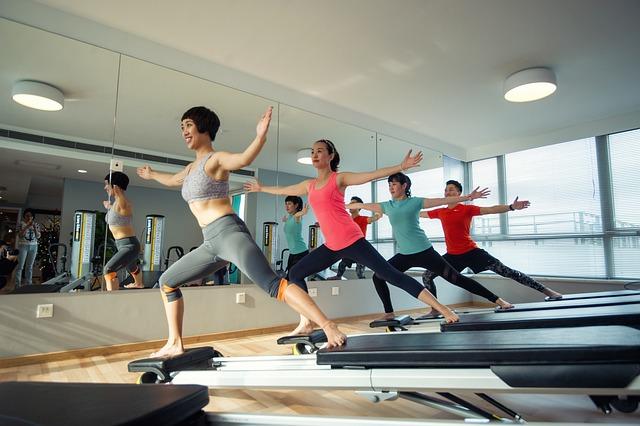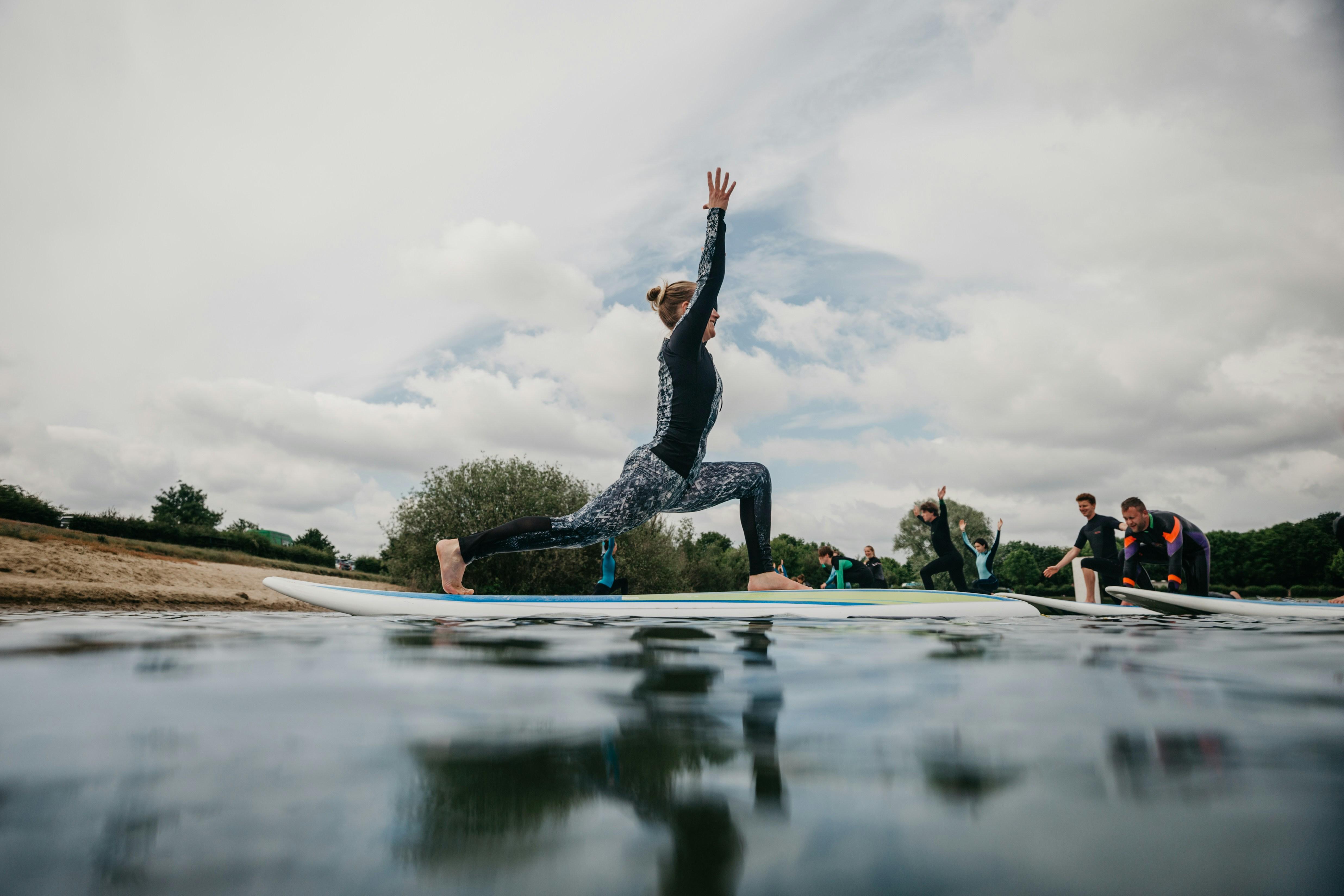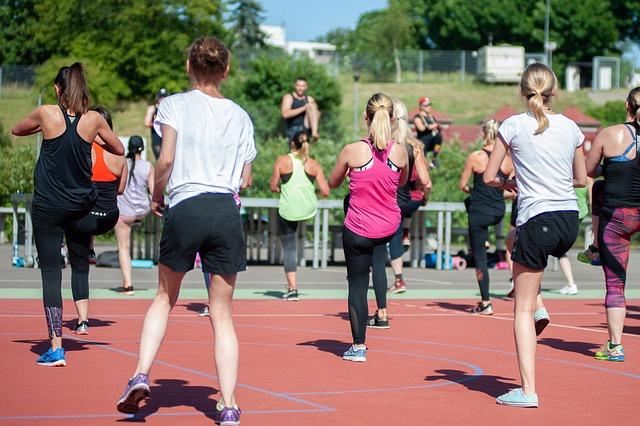Each month, countless individuals brace themselves for the familiar, often debilitating discomfort that accompanies menstruation. While painkillers and heating pads offer some relief, many are seeking alternative solutions to ease the burden of menstrual cramps. Enter the world of exercise—a natural, empowering approach that not only strengthens the body but also soothes the relentless ache of period pain. This article delves into a series of exercises that have been shown to effectively alleviate menstrual cramps, offering a blend of science and movement to transform those challenging days into an opportunity for rejuvenation and relief. Whether you’re a seasoned fitness enthusiast or a curious beginner, discover how the right exercises can become your trusted ally in navigating the cycle of life with greater ease and comfort.
Gentle Yoga Poses to Soothe Menstrual Discomfort
During your menstrual cycle, incorporating gentle yoga poses into your routine can provide significant relief from discomfort. These poses help in relaxing the muscles, improving circulation, and calming the mind. Here are a few poses to try:
- Child’s Pose (Balasana): This calming posture gently stretches the lower back and hips, providing a soothing effect on the abdominal muscles. Kneel on the floor, touch your big toes together, and sit on your heels. With your knees hip-width apart, lay your torso down between your thighs and extend your arms forward.
- Cat-Cow Pose (Marjaryasana-Bitilasana): This dynamic movement between two poses helps to massage the spine and belly organs. Start on your hands and knees, inhale as you drop your belly and lift your gaze (Cow Pose), then exhale as you arch your spine and tuck your chin (Cat Pose).
- Supine Twist (Supta Matsyendrasana): Twisting poses are excellent for releasing tension in the lower back and abdomen. Lie on your back, bring your knees to your chest, and let them fall to one side as you extend your arms out in a T-shape. Turn your head in the opposite direction for a gentle spinal twist.
These poses, practiced with deep, mindful breathing, can help alleviate menstrual cramps and create a sense of peace and relaxation in the body.
 Pilates Techniques for Core Strength and Pain Relief”>
Pilates Techniques for Core Strength and Pain Relief”>
Pilates Techniques for Core Strength and Pain Relief
Pilates offers a gentle yet effective way to enhance core strength and alleviate discomfort during menstruation. By focusing on controlled movements and mindful breathing, Pilates helps to release tension and promote relaxation in the body. Here are some techniques that can be particularly beneficial:
- Pelvic Tilts: This exercise targets the lower back and abdominal muscles, helping to relieve pressure and reduce cramping. Lie on your back with knees bent and feet flat on the floor. Gently tilt your pelvis upwards, pressing your lower back into the mat, then release. Repeat in a slow, controlled manner.
- Spine Stretch Forward: This move is excellent for releasing tension in the spine and stretching the back muscles. Sit tall with legs extended in front of you, feet flexed. Inhale deeply, and as you exhale, slowly reach forward, aiming to touch your toes. Hold for a few seconds, then return to the starting position.
- Leg Circles: Strengthen your core and improve hip flexibility with this simple yet effective exercise. Lie on your back with one leg extended towards the ceiling. Keep your core engaged and slowly draw small circles with your leg. Switch directions and then repeat with the other leg.
Incorporating these Pilates techniques into your routine can not only bolster core strength but also provide much-needed relief from menstrual discomfort, making those days a bit more manageable.

Stretching Routines to Enhance Flexibility and Reduce Cramps
Incorporating stretching into your routine can be a game-changer for those grappling with the discomfort of menstrual cramps. Not only does stretching improve flexibility, but it also promotes blood circulation and helps alleviate tension in the muscles. Here are some stretches that are particularly effective:
- Cat-Cow Stretch: This gentle flow between two poses warms the body and brings flexibility to the spine. Begin on all fours, inhale as you drop your belly, and lift your head and tailbone for the cow pose. Exhale as you arch your back, tucking your chin and tailbone for the cat pose.
- Child’s Pose: A soothing posture that stretches the hips, thighs, and ankles. Kneel on the floor, touch your big toes together, and sit on your heels. Lay your torso between your thighs and stretch your arms forward.
- Seated Forward Bend: This pose stretches the spine, shoulders, and hamstrings. Sit with your legs extended, hinge at your hips, and reach forward to grab your feet or shins, allowing your back to round naturally.
Regular practice of these stretches not only enhances your overall flexibility but also serves as a gentle remedy for the pain and discomfort associated with menstrual cramps. Remember to breathe deeply and move slowly to maximize the benefits of each stretch.

Mindful Breathing Exercises to Calm and Ease Tension
Engaging in mindful breathing can be a gentle yet powerful way to alleviate the discomfort associated with menstrual cramps. By focusing on your breath, you can create a state of calm that helps to relax tense muscles and ease pain. Consider the following techniques:
- 4-7-8 Breathing: Inhale deeply through your nose for four counts, hold your breath for seven counts, and then exhale slowly through your mouth for eight counts. Repeat this cycle for several minutes to encourage relaxation.
- Diaphragmatic Breathing: Lie down comfortably and place one hand on your chest and the other on your abdomen. Breathe in deeply through your nose, ensuring your diaphragm (not your chest) inflates with air. This method can help in reducing muscle tension.
- Box Breathing: Visualize a box. Inhale as you count to four, hold your breath for four counts, exhale for four counts, and pause again for four counts before repeating. This rhythmic pattern can aid in stress reduction and pain management.
These exercises not only foster a sense of tranquility but also enhance your body’s natural ability to manage pain, offering a holistic approach to menstrual discomfort.








